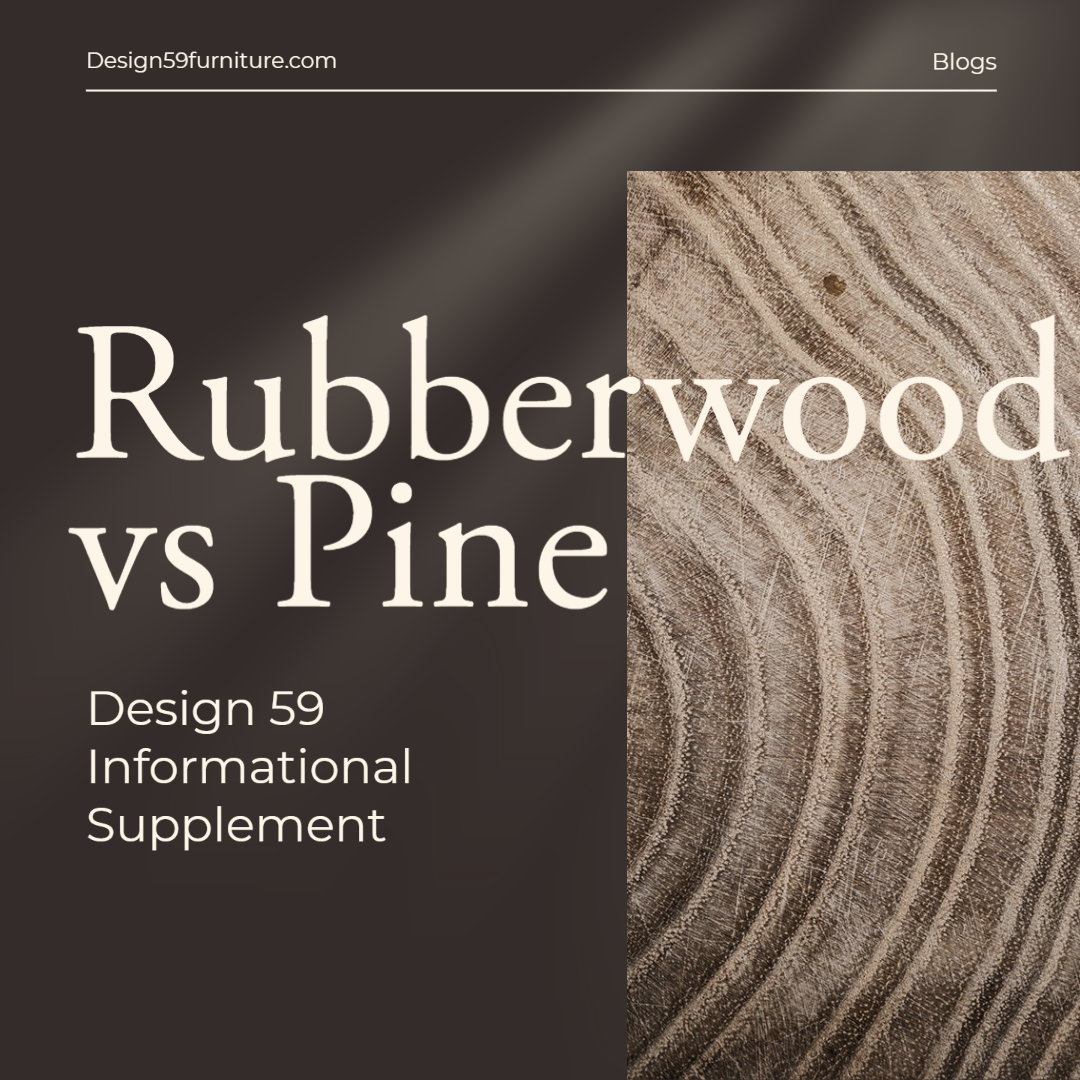Introduction
When it comes to selecting wood for furniture, flooring, or construction, there are numerous options available. Two popular choices are rubberwood and pine. In this article, we'll delve into the differences between these two types of wood, their pros and cons, and how to decide which one is right for your specific needs.
What is Rubberwood?
Origin and Characteristics
Rubberwood, also known as plantation hardwood or parawood, comes from the Hevea brasiliensis tree. These trees are primarily grown in Southeast Asia for latex production. Once the trees have reached the end of their latex-producing lifespan (usually 25-30 years), they are harvested for their wood. Rubberwood is a light-colored, moderately dense hardwood with a smooth grain pattern very similar to maple hardwood.
Environmental Impact
One of the main advantages of rubberwood is its environmentally friendly nature. Since the trees are initially grown for latex production, using the wood for furniture and other purposes is essentially upcycling, reducing waste and making efficient use of natural resources.
What is Pine?
Origin and Characteristics
Pine is a softwood derived from various species of coniferous trees found in North America, Europe, and Asia. It has a light, pale color with characteristic knots and a distinctive grain pattern. Pine is relatively lightweight and easy to work with, making it a popular choice for a variety of applications.
Environmental Impact
Pine forests grow quickly and can be sustainably managed, making pine a renewable resource. However, the transportation of pine from regions where it's abundant, like North America and Europe, can contribute to its environmental footprint.
Comparison of Rubberwood and Pine
Durability and Strength
Rubberwood is considered a hardwood, making it more durable and stronger than pine, a softwood. Pine table legs split at a much higher frequency than parawood legs. However, both are still considered suitable for furniture and other applications such as dog beds and cutting boards, depending on the specific requirements.
Aesthetics
Both rubberwood and pine have unique aesthetic qualities. Rubberwood has a smooth, consistent grain pattern, while pine is known for its knots and distinctive grain. The choice between the two often comes down to personal preference and the desired look of the finished product.
Cost
Pine is generally more affordable than rubberwood due to its widespread availability and lower production costs. However, the price difference may vary depending on factors such as location and demand.
Availability
Pine is more widely available than rubberwood, especially in regions like North America and Europe. However, rubberwood's availability has been increasing in recent years due to its growing popularity. Design 59 offers a wide variety of rubberwood products to our customers to help create higher quality pieces of furniture.
Environmental Friendliness
Both rubberwood and pine are considered environmentally friendly options, but rubberwood has a slight edge in this regard. The upcycling of rubberwood from latex-producing trees reduces waste and makes efficient use of natural resources. On the other hand, pine is a renewable resource due to its quick growth and sustainable management practices. However, transportation-related emissions from pine's widespread distribution can impact its environmental footprint.
Applications of Rubberwood and Pine
Furniture
Both rubberwood and pine are popular choices for furniture-making. Rubberwood is often used for high-quality, durable furniture pieces, while pine is more commonly used for budget-friendly or rustic-style furniture. The choice between the two depends on factors such as budget, design preferences, and durability requirements.

Flooring
Rubberwood and pine can both be used for flooring, but there are some differences to consider. Rubberwood's increased durability makes it suitable for high-traffic areas, while pine may be more suitable for rooms with less foot traffic due to its softer nature.
Construction
Pine is widely used in construction due to its affordability, availability, and ease of use. Rubberwood, while not as common, is sometimes used for specific applications where its durability and environmental benefits are particularly advantageous.
How to Choose Between Rubberwood and Pine
Purpose
When deciding between rubberwood and pine, consider the specific application and the required characteristics of the wood. For example, if durability is a primary concern, rubberwood may be the better choice. For painted furniture, rubberwood is always recommended. However, if cost and availability are more important, pine may be more suitable.
Budget
Your budget may also influence your choice between rubberwood and pine. Pine is generally more affordable than rubberwood, making it an attractive option for those on a tighter budget.
Personal Preferences
Aesthetics and personal preferences play a significant role in choosing between rubberwood and pine. Consider which wood's appearance, grain pattern, and color will best suit your project and design preferences.
Conclusion
Both rubberwood and pine have their unique advantages and disadvantages, making them suitable for various applications. By considering factors such as purpose, budget, and personal preferences, you can make an informed decision about which wood is the best choice for your specific needs. Ultimately, both rubberwood and pine can be excellent, environmentally friendly options for furniture, flooring, and construction projects.
FAQs
1. Is rubberwood more durable than pine?
Yes, rubberwood is considered more durable than pine due to its classification as a hardwood. However, both types of wood can be suitable for various applications, depending on the specific requirements.
2. Which is more environmentally friendly, rubberwood or pine?
Both rubberwood and pine are considered environmentally friendly options, but rubberwood has a slight edge due to its upcycling from latex-producing trees. Pine is a renewable resource, but its transportation-related emissions can impact its environmental footprint.
3. Is pine more affordable than rubberwood?
Generally, pine is more affordable than rubberwood due to its widespread availability and lower production costs. However, the price difference may vary depending on factors such as location and demand.
4. Can both rubberwood and pine be used for furniture and flooring?
Yes, both rubberwood and pine can be used for furniture and flooring. However, there are differences in their durability, aesthetics, and suitability for specific applications that should be considered.
5. How do I decide between rubberwood and pine for my project?
Consider factors such as the purpose of your project, your budget, and personal preferences when deciding between rubberwood and pine. Each wood type has its unique advantages and disadvantages, so the best choice depends on your specific needs.

